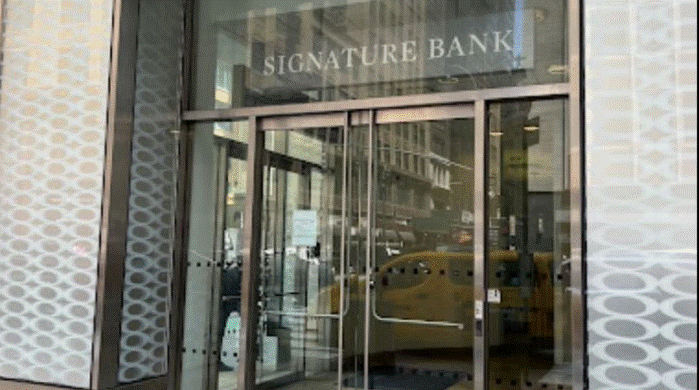Background
After the 2008 financial crisis, regulators imposed tougher rules on banks whose failure could threaten the financial system because of their size, complexity and global reach. Those measures included stepped-up planning to unwind operations in the face of catastrophic losses and requirements to stockpile additional capital. Large regional banks were exempt from some of the rules.
SVB, a regional bank, was the 14th largest US bank that during the recent tech boom grew quite quickly in size and had (up until last year) large cash inflows from capital raisings and IPOs, and little if any need for loans. Therefore, the asset side of the balance sheet became unusually biased toward US treasuries and mortgage-backed securities (MBS) to match the high level of deposits. Rather than keeping the interest risk low, SVB lengthened its duration out to 6.2 years to take advantage of the steep yield curve before the Fed began tightening.
As rates rose and the whole yield curve in the US moved higher (and bond prices lower) unrealised losses mounted and they did not hedge their interest rate risk exposure. The US rate hikes through last year and into this year also caused tech funding markets to dry up in 2022, meaning firms were drawing down cash reserves and reducing overall deposits at SVB. Unrealised loss-carrying assets such as US treasuries and MBS needed to be sold to fund these withdrawals, eroding the bank’s capital base that eventually required an immediate capital injection, causing alarm that precipitated the bank run late last week.
On Friday, the US regulators closed SVB and sent it into receivership. Last night, the regional Signature Bank was also shut down by US authorities as they also had a mismatch of assets.
The present -The US authorities announcement
We have received a joint statement from the US Department of Treasury, the Federal Reserve, and the Federal Deposit Insurance Corporation (FDIC).
“After receiving a recommendation from the boards of the FDIC and the Federal Reserve, and consulting with the President, Secretary Yellen approved actions enabling the FDIC to complete its resolution of Silicon Valley Bank, Santa Clara, California, in a manner that fully protects all depositors. Depositors will have access to all of their money starting Monday, March 13. No losses associated with the resolution of Silicon Valley Bank will be borne by the taxpayer.
We are also announcing a similar systemic risk exception for Signature Bank, New York, New York, which was closed today by its state chartering authority. All depositors of this institution will be made whole. As with the resolution of Silicon Valley Bank, no losses will be borne by the taxpayer. Shareholders and certain unsecured debtholders will not be protected. Senior management has also been removed. Any losses to the Deposit Insurance Fund to support uninsured depositors will be recovered by a special assessment on banks, as required by law.
Finally, the Federal Reserve Board on Sunday announced it will make available additional funding to eligible depository institutions to help assure banks have the ability to meet the needs of all their depositors.”
What happens next?
The announcements suggest that all SVB and Signature Bank depositors will be repaid in full rather than the usual depositor limit of USD 250,000. Importantly, this is different from a bailout as SVB and Signature Bank shareholders and unsecured creditors will not be protected.
The bank depositor bailout now works like this:
1. The Fed gives the money to the FDIC as needed.
2. The FDIC makes all deposits available on Monday (tonight).
3. The FDIC then sells the assets of the banks, which takes some time.
4. The difference between the cost of bailouts of the depositors and the proceeds from the asset sales is the actual amount the FDIC lost.
5. The FDIC charges the other banks a “special assessment” (or levy) to cover those losses, “as required by law,” and then pays the Fed back with the funds it collected from the other banks.
Despite this initial relief, the situation remains uncertain as the implications of this deposit backstop is a new initiative to assist depositor confidence in US regional banks. In addition, the Fed is providing all other banks that may require liquidity for near-term deposit withdrawals, a Bank Term Funding Program (BTFP) offering loans of up to 1 year (collateral is US treasuries or MBS) to allow them time to sell down assets and then repay the Fed.
Important Notice: This document is published by Lonsec Investment Solutions Pty Ltd ACN: 608 837 583, a corporate authorised representative (CAR number: 1236821) (LIS) of Lonsec Research Pty Ltd ABN: 11 151 658 561 AFSL: 421 445 (Lonsec Research)). LIS creates the model portfolios it distributes using the investment research provided by Lonsec Research but has not had any involvement in the investment research process for Lonsec Research. LIS and Lonsec Research are owned by Lonsec Holdings Pty Ltd ACN: 151 235 406. Please read the following before making any investment decision about any financial product mentioned in this document.
Disclosure at the date of publication: Lonsec Research receives a fee from the relevant fund manager or product issuers for researching financial products (using objective criteria) which may be referred to in this document. Lonsec Research may also receive a fee from the fund manager or product issuer (s) for subscribing to research content and other Lonsec Research services. Lonsec Research receives fees for providing investment consulting advice, approved product lists and other advice, to clients. LIS receives a fee for providing the model portfolios to financial services professionals. LIS’ and Lonsec Research’s fees are not linked to the financial product rating(s) outcome or the inclusion of the financial product(s) in model portfolios. LIS and Lonsec Research may hold any financial product(s) referred to in this document. Lonsec Research’s representatives and/or their associates may hold any financial product(s) referred to in this document, but details of these holdings are not known to the analyst(s).
Warnings: Past performance is not a reliable indicator of future performance. Any express or implied rating or advice presented in this document is limited to “general advice” (as defined in the Corporations Act 2001 (Cth)) and based solely on consideration of the investment merits of the financial product(s) alone, without taking into account the investment objectives, financial situation and particular needs (“financial circumstances”) of any particular person. Before making an investment decision based on the rating or advice, the reader must consider whether it is personally appropriate in light of his or her financial circumstances or should seek independent financial advice on its appropriateness. If the advice relates to the acquisition or possible acquisition of a particular financial product, the reader should obtain and consider the Investment Statement or the Product Disclosure Statement for each financial product before making any decision about whether to acquire the financial product.
Disclaimer: LIS provides this document for the exclusive use of its clients. It is not intended for use by a retail client or a member of the public and should not be used or relied upon by any other person. No representation, warranty or undertaking is given or made in relation to the accuracy or completeness of the information presented in this document, which is drawn from public information not verified by LIS. Financial conclusions, ratings and advice are given on reasonable grounds held at the time of completion (refer to the date of this document) but subject to change without notice. LIS assumes no obligation to update this document following publication. Except for any liability which cannot be excluded, LIS and Lonsec, their directors, officers, employees and agents disclaim all liability for any error or inaccuracy in, misstatement or omission from, this document or any loss or damage suffered by the reader or any other person as a consequence of relying upon it.
Copyright © 2023 Lonsec Investment Solutions Pty Ltd ACN: 608 837 583 (LIS), a corporate authorised representative (CAR number: 1236821) of Lonsec Research Pty Ltd ABN: 11 151 658 561 AFSL: 421 445 (Lonsec Research). This report is subject to copyright of LIS. Except for the temporary copy held in a computer’s cache and a single permanent copy for your personal reference or other than as permitted under the Copyright Act 1968 (Cth), no part of this report may, in any form or by any means (electronic, mechanical, micro-copying, photocopying, recording or otherwise), be reproduced, stored or transmitted without the prior written permission of LIS.
This report may also contain third party supplied material that is subject to copyright. Any such material is the intellectual property of that third party or its content providers. The same restrictions applying above to LIS copyrighted material, applies to such third-party content.






